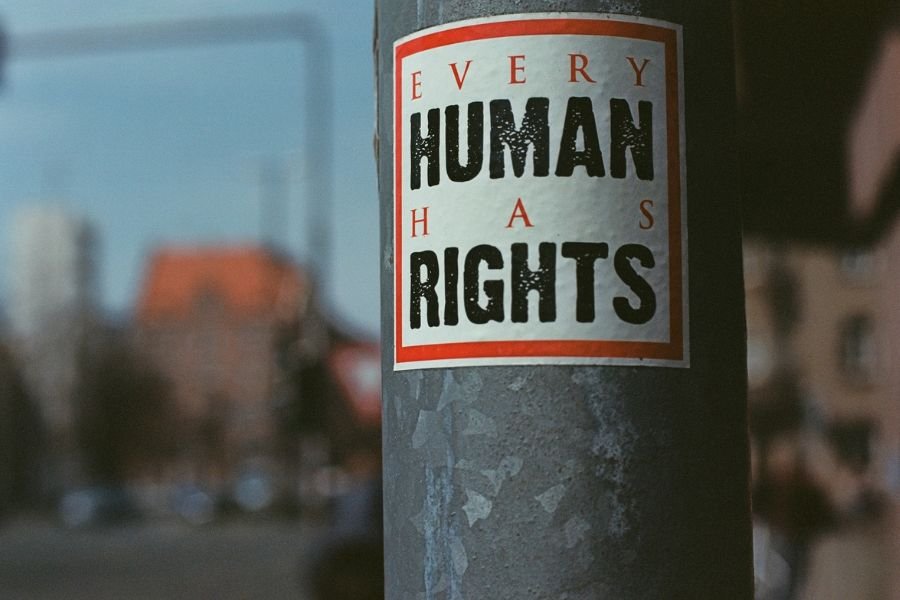
Sticker reading “Every Human Has Rights” on a metal pole (Image by Markus Spiske via Unsplash)
The International Bill of Human Rights is comprised of three documents:
Universal Declaration of Human Rights (1948)
International Covenant on Economic, Social and Cultural Rights (1966)
International Covenant on Civil and Political Rights (1966)
While the Universal Declaration of Human Rights is not legally-binding, the two covenants are. Accordingly, they serve as foundational documents in international human rights law.
Primary Source Documents
The Universal Declaration of Human Rights (UDHR) is the foundational document of international human rights law. Following the atrocities of World War II, the international community vowed to prevent such grave human rights abuses from occurring in the future. To do this it created the UDHR, which contains thirty articles related to important civil, economic, social, cultural, and political rights.
The Commission on Human Rights, led by Eleanor Roosevelt, drafted the document and was made up of eighteen members from varying cultural, religious, and political backgrounds. The final drafting of the document took two years to complete. It was adopted by the UN General Assembly on December 10, 1948. Learn more >
The UN General Assembly adopted the International Covenant on Civil and Political Rights in 1966. It is one of three documents that make up the International Bill of Rights.
The covenant protects many important rights which limit the encroachments of government, including the right to life, freedom of speech, and the right to due process. Unlike the Universal Declaration of Human Rights, the covenant is legally-binding. It is monitored by the United Nations Human Rights Committee, which meets three times per year. Read document >
The UN General Assembly adopted the International Covenant on Economic, Social and Cultural Rights in 1966. It is one of three documents that make up the International Bill of Rights.
The covenant recognizes equal rights between men and women, the right to work, and the right to health, among others. It includes the principle of progressive realization, recognizing that some countries may not be able to achieve all of the rights due to various constraints. Regardless of the constraints, however, each party to the covenant is expected to take steps toward making the rights enshrined within it a reality. Read document >


